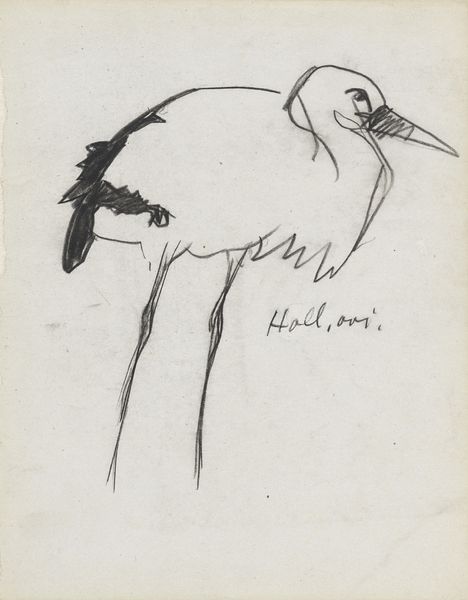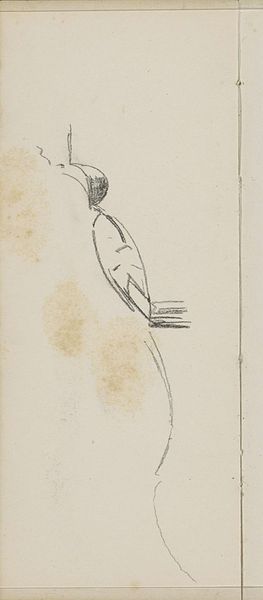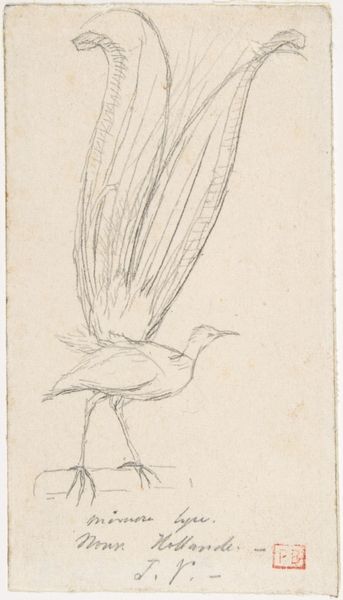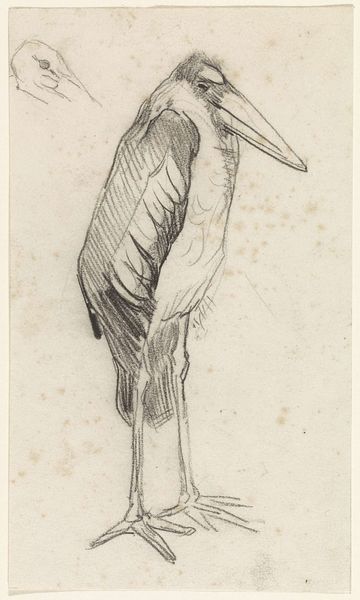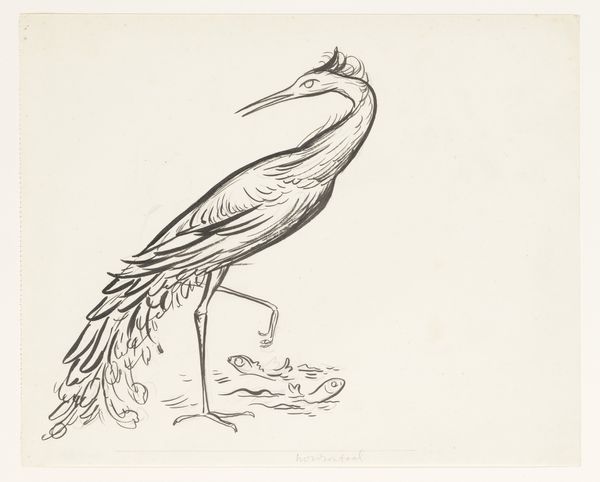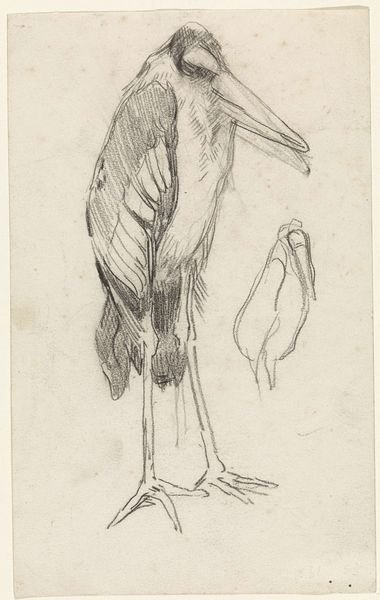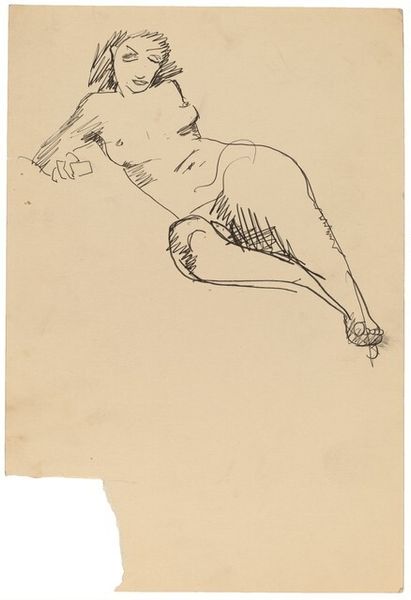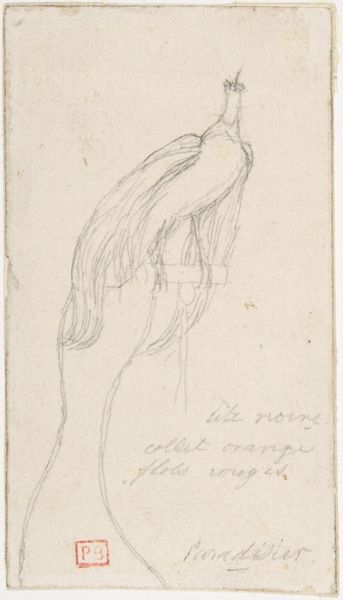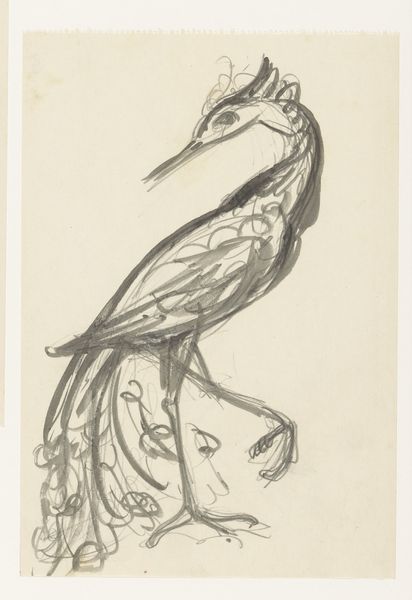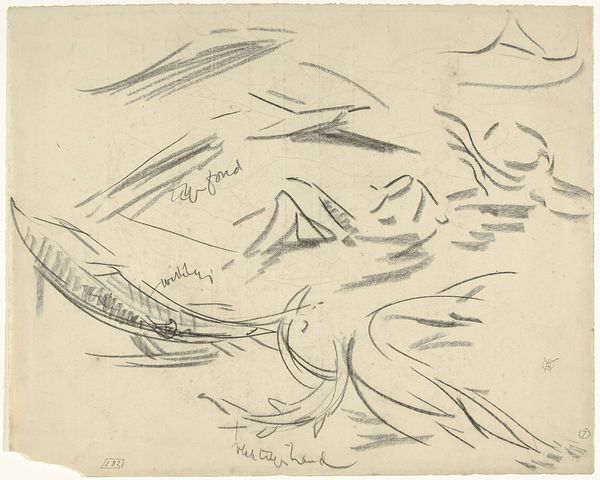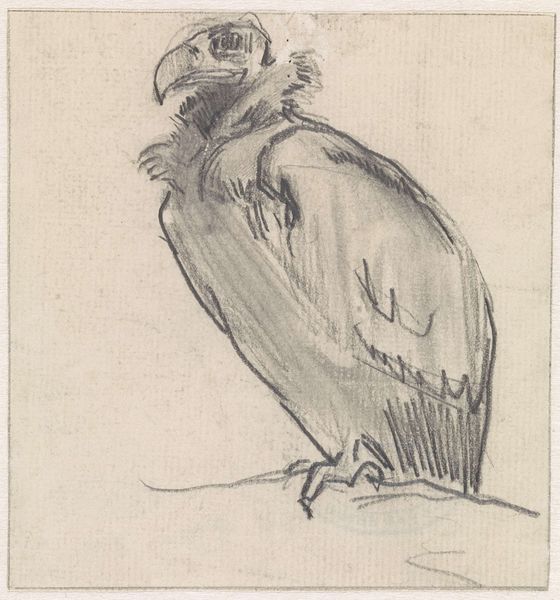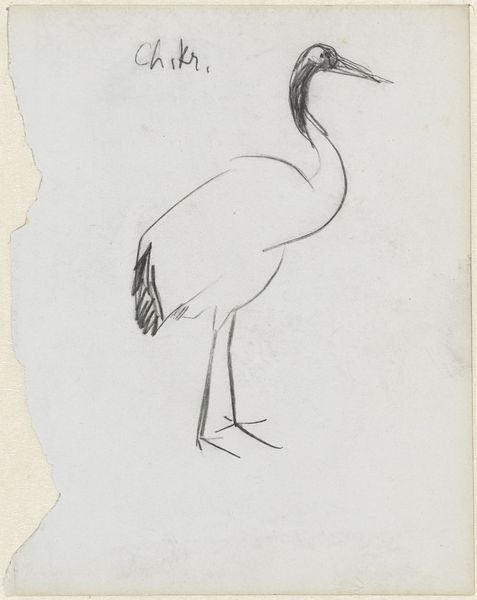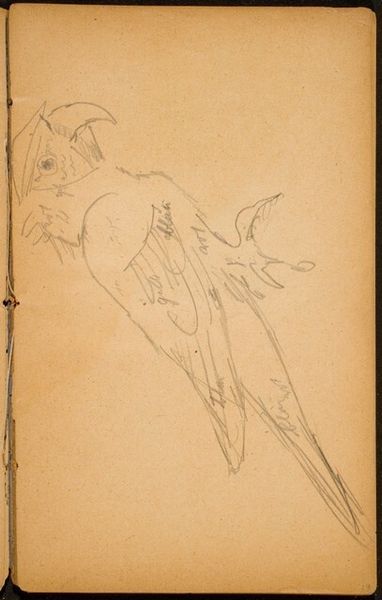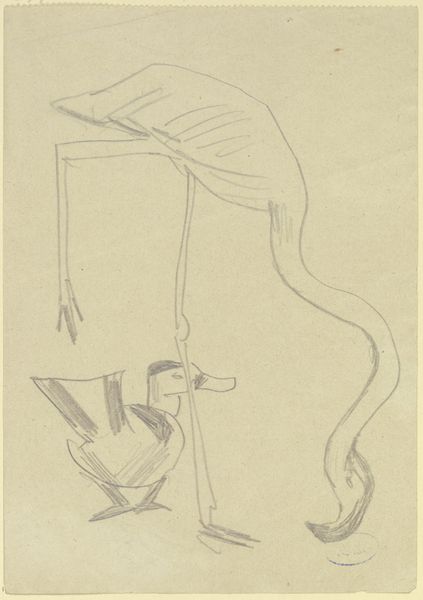
drawing, ink, pencil
#
drawing
#
amateur sketch
#
light pencil work
#
quirky sketch
#
pencil sketch
#
figuration
#
personal sketchbook
#
ink
#
ink drawing experimentation
#
pen-ink sketch
#
pencil
#
line
#
sketchbook drawing
#
naturalism
#
sketchbook art
#
initial sketch
Dimensions: height 164 mm, width 68 mm
Copyright: Rijks Museum: Open Domain
Curator: Looking at this pencil and ink drawing by Gerrit Willem Dijsselhof, titled "Ooievaar," created sometime between 1876 and 1924, one can’t help but feel a sense of spontaneity. It’s currently housed right here in the Rijksmuseum. Editor: Indeed, it exudes a sense of immediacy. The stork, captured with these sparse, somewhat whimsical lines, has an almost endearing vulnerability about it. There is some unfinished detail there too, I imagine we will get to that shortly? Curator: Precisely. The unfinished detail does invite us into Dijsselhof's process. Notice how the stark black of the ink creates dynamic weight and a graphic presence next to the feathered texture. The overall design and form are emphasized as the most fundamental part of the composition here, not realism. Editor: It is true that the very act of sketching – of quickly capturing the essence of a creature – carried particular resonance during a period of heightened interest in capturing images via the newly invented technology of photography. As an unfinished work we might be led to consider questions such as how artistic practices were navigating newly established boundaries between documentary image making, and free form artistic image-making. Curator: Yes, considering the art historical context that contrasts the growing mechanical eye and human freehand works on the perception and cultural relevance is certainly pertinent. The form's overall composition, for example, leads one's gaze smoothly across the page. There is also that interesting loose study up above as well, more akin to rudimentary geometric forms. Editor: Absolutely, but I'd like to push on the idea of process and its contextual significance. We are perhaps primed to value “finished” artworks. Works such as this, however, allows for a closer inspection of process, which may be interpreted through lenses of socio-economic history. Dijsselhof's family, for example, moved into more artistic circles. Perhaps it's a depiction of burgeoning social capital that offers another point to think about the relationship between the subject and object. Curator: You always offer the most refreshing observations. This discussion has revealed layers of insight I had not previously considered in my appreciation of the composition's form and medium, allowing us to examine the nuances of form and social value. Editor: Likewise, exploring the interplay of these basic marks alongside your breakdown reminds me that even seemingly simple works on paper often function as a fascinating touchstone in understanding an artwork's status.
Comments
No comments
Be the first to comment and join the conversation on the ultimate creative platform.
